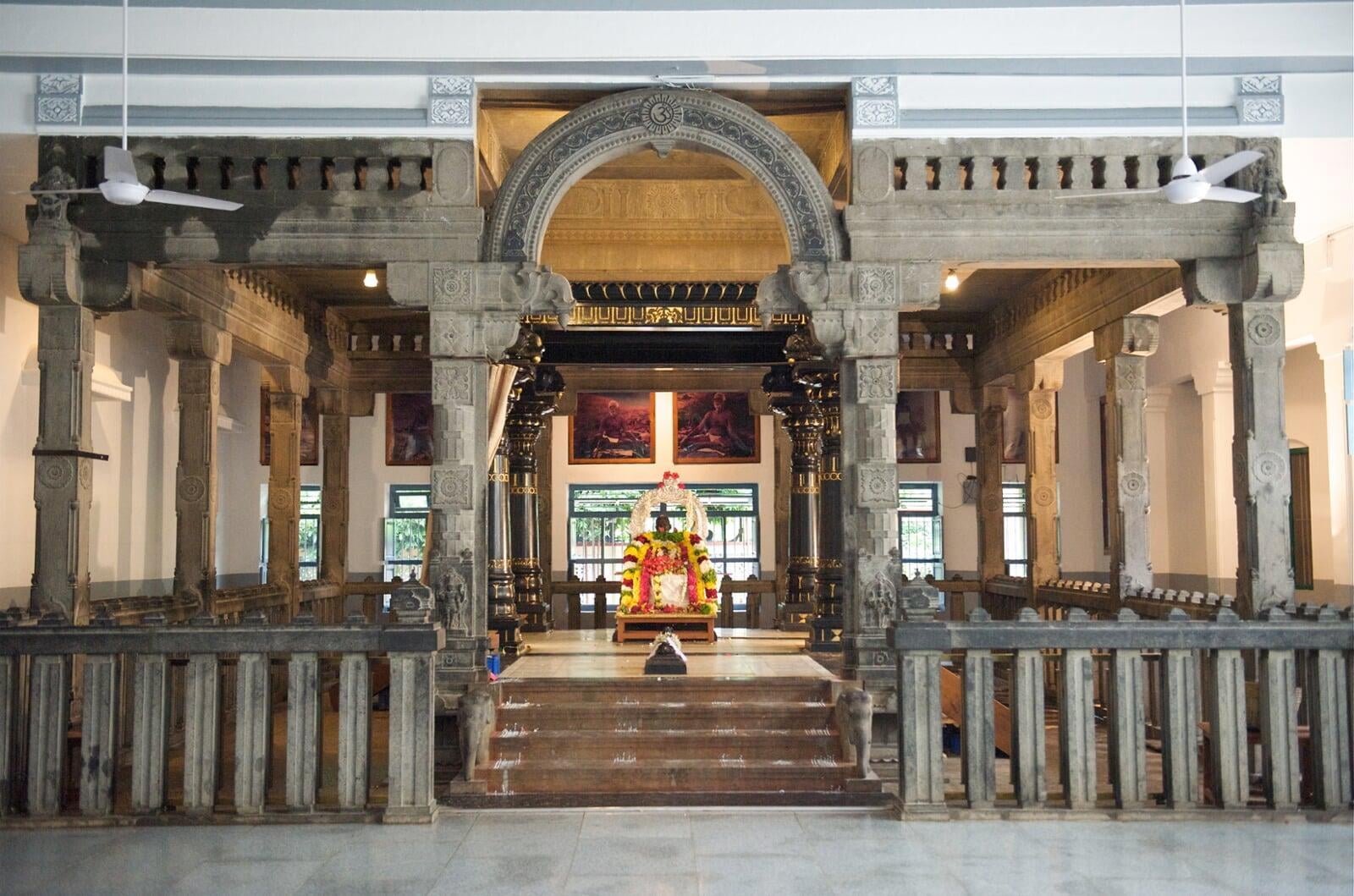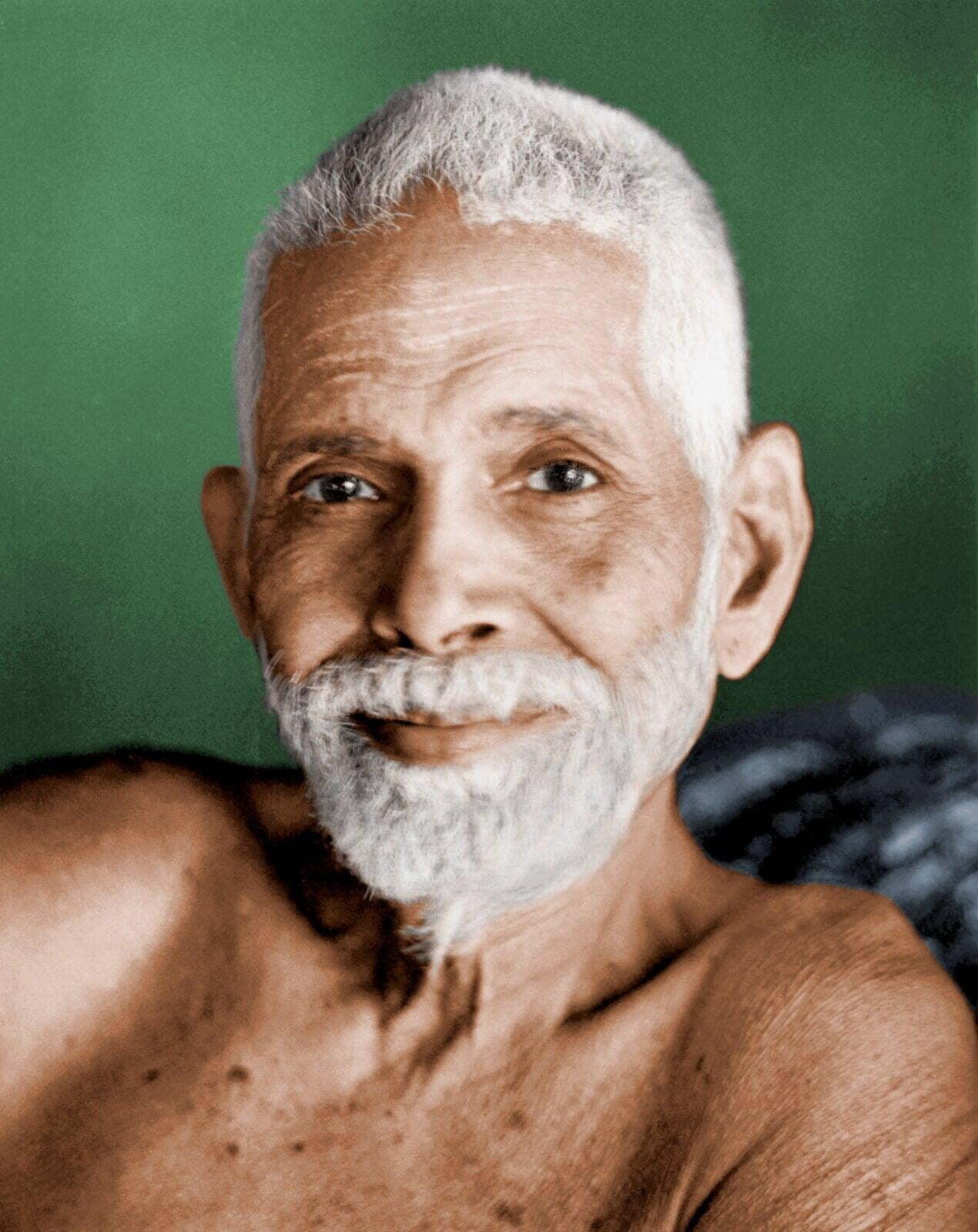The Ramana Ashram, situated at the base of the revered Arunachala mountain in Tiruvannamalai, Tamil Nadu, India, stands as a profound symbol of spiritual enlightenment. Founded by the esteemed sage Sri Ramana Maharshi, this sacred sanctuary has evolved into a revered pilgrimage site, drawing seekers from diverse backgrounds who are captivated by the magnetic allure of self-inquiry and the teachings of non-duality.
Sri Ramana Maharshi's spiritual journey began with a transformative awakening at the tender age of sixteen. In 1896, he left his familial home in Tiruchuli and embarked on a pilgrimage to Arunachala, where he eventually settled within the secluded caves encircling the sacred hill. For years, he dwelled in solitary contemplation, delving into profound depths of self-realization.
The word of Ramana Maharshi's presence spread far and wide, beckoning disciples and devotees seeking guidance on the path to enlightenment. The ashram gradually took shape around the Samadhi shrine of his beloved mother Alagammal, who passed away on May 19, 1922. Initially, a modest hut was erected, alongside a shrine dedicated to her memory. The Paliteertham waters served for bathing, while the Ramanateertham waters were employed for rituals. Generous offerings from devotees sustained the ashram, supplemented by donations for a communal kitchen. By 1924, the ashram's infrastructure expanded with the construction of two additional huts, one opposite the Samadhi and the other to the north. The construction of the Old Hall, the ashram's central edifice, commenced, serving as the nucleus for Ramana Maharshi's discourses and congregations. Devotees, hailing from various corners of India and abroad, congregated at the ashram to immerse themselves in the sage's presence and seek his spiritual counsel.
The Old Hall, particularly, became the focal point of spiritual communion, where devotees sat in the serene ambiance, enveloped by the palpable grace of Ramana Maharshi. His eyes radiated divine love, and his words, when spoken, illuminated the minds of his visitors. There were no rigid rules for meditation; visitors could come and go freely, even during the nighttime.
Ramana Maharshi's declining health, marked by the detection of sarcoma in his left arm in 1949, did not deter the ashram's vitality. Even after his mahasamadhi on April 14, 1950, the ashram continued to flourish under the stewardship of his disciples. His profound teachings, advocating self-inquiry and the realization of the "I AM," resonated deeply with spiritual aspirants seeking liberation from the cycle of birth and death.
In subsequent years, the Ramana Ashram underwent expansion to accommodate the increasing number of visitors. The addition of new facilities, such as guesthouses, meditation halls, and an extensive library, enhanced the ashram's offerings, providing seekers with ample resources for spiritual exploration.
Remarkably, the ashramites neither solicited donations nor possessed initial capital. The primary sources of funding stemmed from the voluntary contributions of visitors and the proceeds generated from the sales of Ashram publications. A dedicated cadre of devotees selflessly served within the ashram, driven solely by their devotion to the cause. Ashram staff remained minimal, with devotees receiving nothing tangible in return for their service, except for the grace of Bhagavan. The continuous operation from the early hours of the morning until late at night underscored the belief that every aspect was sustained by Bhagavan's perpetual benevolence.
Presently, the ashram encompasses several guesthouses, providing accommodations free of charge for devotees. Additionally, it houses a dispensary catering to the medical needs of the less fortunate, a goshala offering shelter to cows, and a veda pathasala providing education to young boys. These endeavors stand as testament to the ashram's commitment to serving both spiritual seekers and the broader community, all sustained by the enduring grace of Bhagavan Ramana Maharshi.
An ashram did not spring up immediately. At first there was only a shed with bamboo poles and a roof of palm leaves. Through the ensuing years the numbers grew, donations came in and regular ashram premises were built – the hall where Ramana sat, the office, the bookstore, the dispensary, the guest room for male visitors and a couple of small bungalows for guests who made a longer stay. A group of sadhus made a colony at Palakottu in a grove to the west of the ashram. With the advent of Cow Lakshmi a cowshed was built along with a large kitchen to cater to the ever-increasing throng of visitors. Dear to Ramana’s heart was taking care of the cows and feeding people, particularly sadhus and poor people. In the course of time a proper temple, the Matrubhuteswara temple, was constructed over Mother Alagammal’s burial place and daily worship continues to be carried out there.


